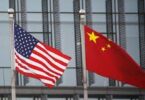Doug Strub
The Biden administration’s launch of the Indo-Pacific Economic Framework (IPEF) negotiations signals renewed US economic engagement in the region. The new framework will supplement the US security focus and seek to re-establish a US leadership role in shaping trade rules.
Announced during President Joe Biden’s trip to East Asia in May 2022, the IPEF negotiations received immediate support from South Korea and Japan, who share similar visions of expanding liberal norms around economic, digital and trade engagement.
The challenge now is to get developing countries in the region to buy into a framework that appears to be asking for a lot while giving little in return. Fortunately for the United States, the 2022 Asia Pacific Economic Cooperation (APEC) meetings include several priority areas that align with the Biden administration’s ambitions, including innovation and the digital economy, inclusive and sustainable growth and shared goals around clean and renewable energy. These meetings will provide a critical opportunity for the United States to engage APEC members on these issues and build support for IPEF.
In the five years since the United States withdrew from the Trans-Pacific Partnership, US leadership in trade and economic issues has declined and the nature of trade in the region has undergone dramatic changes. Rapid digitalisation throughout the COVID-19 pandemic, new strategic thinking about the role of supply chain resiliency in national security and increased urgency around the need to address environmental challenges have highlighted the need for new rules to govern an evolving trade system.
Meanwhile, America’s retreat from economic leadership in the region has been offset by increased Chinese efforts to establish itself as the dominant power in shaping trade rules and economic engagement. The Belt and Road Initiative, Asian Infrastructure Investment Bank, China’s participation in the Regional Comprehensive Economic Partnership agreement and efforts to expand the BRICS countries — Brazil, Russia, India, China and South Africa — have all worked toward Beijing’s goal of growing its global influence.
But the ASEAN–US Special Summit, IPEF launch and announcement of new US embassies in Kiribati and Tonga have signalled the United States’ intention to reengage with the region.
The 2022 APEC meetings provide a forum for the United States to gain support for its Indo-Pacific trade strategy, as 12 of the 14 founding IPEF members also participate in APEC. Following July’s first full meeting of IPEF members, APEC’s Third Senior Officials’ Meeting in late August 2022 will provide an opportunity for the United States to build further support for its goals.
The Biden administration has also launched several trade-related initiatives with APEC members, which will work to strengthen support for US trade and rule-setting objectives in the region. The Global Cross-Border Privacy Rules Forum, established in April 2022 by six APEC economies, will work toward several of the objectives in the APEC Internet and Digital Economy Roadmap. The new US–Taiwan Initiative on 21st-Century Trade provides an avenue for expanded trade engagement with another APEC economy.
These efforts have built momentum for the nascent US Indo-Pacific trade strategy. Joint statements with Korea and Japan emphasised the need to bolster the rules-based international system and early signals from South Korean President Yoon Suk-yeol indicate that the new administration’s policies will align Seoul and Washington more closely. The United States must now convert this support into successful negotiations with meaningful outcomes.
During President Biden’s Asia trip, the United States and Japan released a fact sheet on their Competitiveness and Resilience Partnership, which launched in April 2021 and pledged US$4.5 billion to strengthen innovation and deploy secure, next-generation networks. The fact sheet highlights several of the initiative’s projects, including a partnership with Australia, the Federated States of Micronesia, Kiribati and Nauru to lay a new undersea cable to improve internet connectivity among several island states.
Just after President Biden’s visit, China continued its engagement campaign by sending Foreign Minister Wang Yi to eight island nations in the Indo-Pacific. Ahead of the trip, Beijing presented the countries with a draft communique on economic and security cooperation — including the establishment of a China–Pacific Islands Free Trade Area — which Wang Yi hoped to gain support for during the trip. But China and the participating island states failed to achieve a consensus regarding the proposals.
This competition for leadership in the Indo-Pacific is poised to intensify as US reengagement in the region continues. With the United States hosting APEC in 2023, and aiming to conclude IPEF negotiations in 18–24 months, both the 2022 and 2023 APEC meetings will provide the United States with a key forum to engage with regional players and advance its economic and trade objectives in the region and vie for influence with China.
Measuring US success in the 2022 APEC meetings will be difficult, but there are several indicators to watch for. One key barometer will be the language adopted in the APEC Leader’s Declaration. Increased alignment of APEC objectives with those of IPEF would indicate support for the direction of the emerging US trade strategy. A greater sign of success would be increased public endorsement of IPEF among APEC economies and the addition of more APEC members to the new framework.






